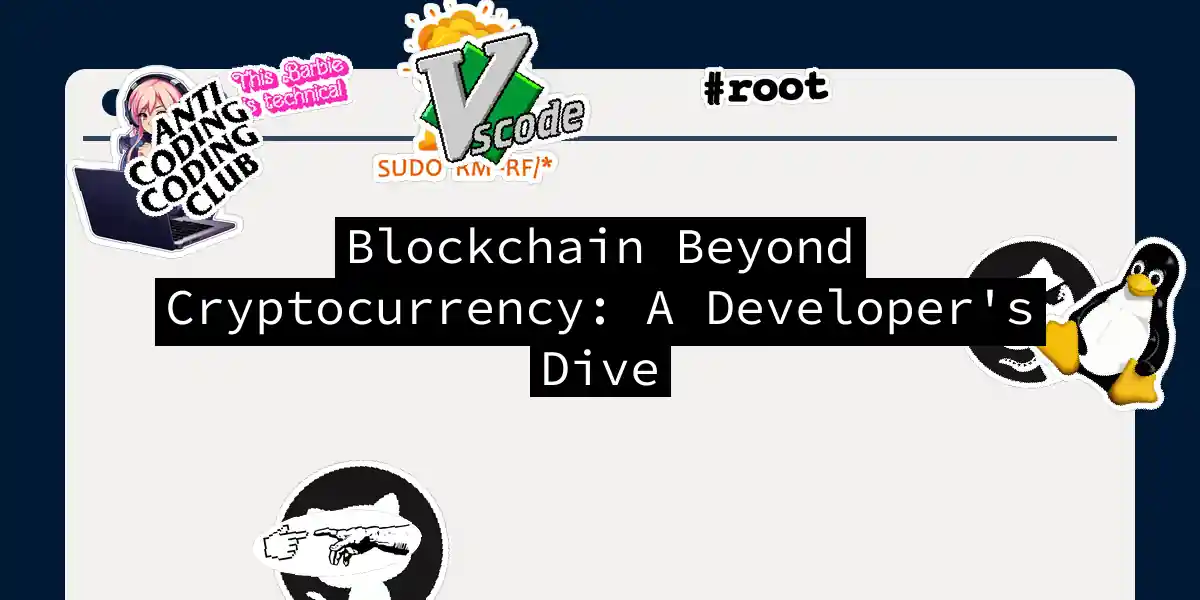Introduction to Blockchain
Blockchain technology has evolved significantly since its inception, moving far beyond its origins in cryptocurrency. It’s a decentralized, distributed ledger that records transactions across a network of computers, ensuring transparency, security, and immutability[2][4]. This article will explore the diverse applications of blockchain beyond cryptocurrency, focusing on practical examples and step-by-step guides for developers.
Key Features of Blockchain
Decentralization
Blockchain operates without a central authority, distributing control among network participants. This decentralization enhances trust and reduces the need for intermediaries[2].
Immutability
Once recorded, transactions cannot be altered without network consensus, making blockchain a secure and reliable ledger[2][4].
Consensus Mechanisms
Blockchain networks use consensus algorithms to validate transactions. Common mechanisms include Proof of Work (PoW) and Proof of Stake (PoS)[2].
Blockchain Applications Beyond Cryptocurrency
1. Smart Contracts
Smart contracts are self-executing programs that automate business logic based on predefined conditions. They are widely used in supply chain management, healthcare, and finance[1][5].
Example Use Case: Supply Chain Management
In supply chain management, smart contracts can automate payment processes when goods are delivered. Here’s a simplified example using Solidity, the programming language for Ethereum-based smart contracts:
pragma solidity ^0.8.0;
contract SupplyChainContract {
address payable public supplier;
address payable public buyer;
uint public amount;
constructor(address _supplier, address _buyer, uint _amount) {
supplier = payable(_supplier);
buyer = payable(_buyer);
amount = _amount;
}
function deliverGoods() public {
// Logic to verify delivery
payable(supplier).transfer(amount);
}
}
2. Healthcare
Blockchain can secure patient data, streamline clinical trials, and improve supply chain management for pharmaceuticals[1][3].
Example Use Case: Secure Patient Data
To secure patient data, blockchain can store medical records in a decentralized manner. Here’s a high-level sequence diagram illustrating how this works:
3. Internet of Things (IoT)
Blockchain enhances IoT security by ensuring device authentication and data integrity. It can manage complex networks of devices more securely[1][5].
Example Use Case: Secure Device Authentication
In IoT, blockchain can be used to authenticate devices securely. Here’s a simplified example using Python:
import hashlib
class IoTDevice:
def __init__(self, device_id):
self.device_id = device_id
self.private_key = hashlib.sha256(device_id.encode()).hexdigest()
def authenticate(self):
# Use private key to sign a message
message = "Hello, Blockchain!"
signature = hashlib.sha256((self.private_key + message).encode()).hexdigest()
return signature
# Example usage
device = IoTDevice("Device123")
signature = device.authenticate()
print(f"Device Signature: {signature}")
4. Government and Voting Systems
Blockchain can enhance voting security and transparency by creating tamper-proof records of votes[1].
Example Use Case: Secure Voting System
To create a secure voting system, blockchain can record votes in a decentralized ledger. Here’s a state diagram illustrating the voting process:
5. Supply Chain Management
Blockchain helps track products from raw materials to delivery, reducing counterfeiting and improving efficiency[3][5].
Example Use Case: Tracking Goods
To track goods in the supply chain, blockchain can store product information at each stage. Here’s a flowchart illustrating this process:
Conclusion
Blockchain technology offers a wide range of applications beyond cryptocurrency, from enhancing security in IoT and healthcare to improving supply chain management and voting systems. By understanding and leveraging these features, developers can create innovative solutions that transform industries and improve lives. Whether you’re a seasoned developer or just starting out, exploring blockchain can open doors to exciting new projects and opportunities. So, dive in and start building your own blockchain applications today
